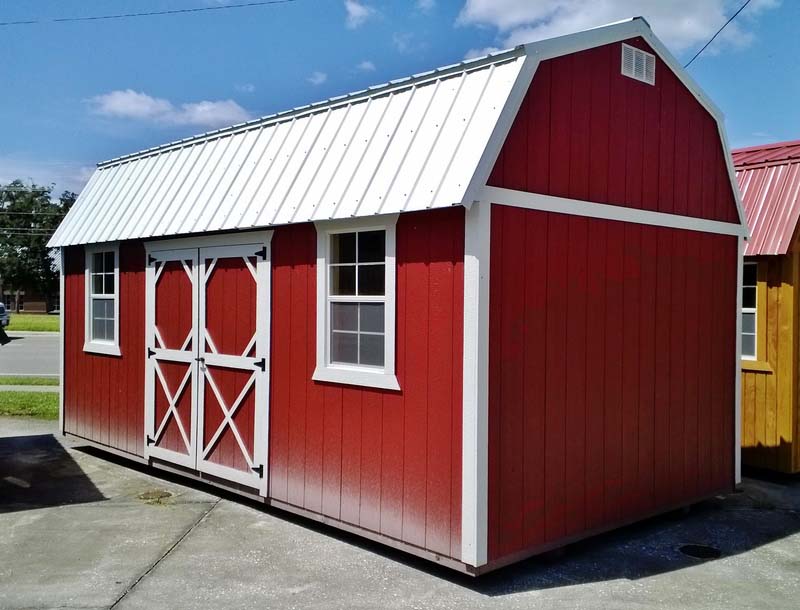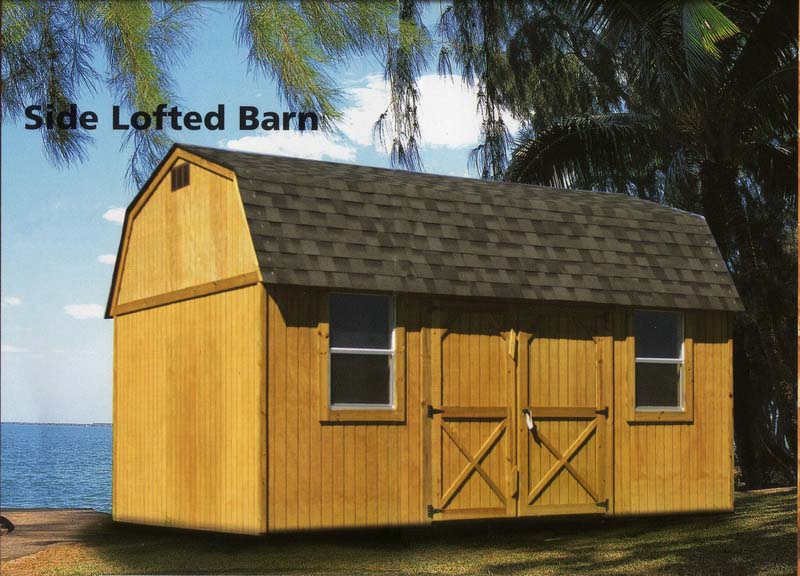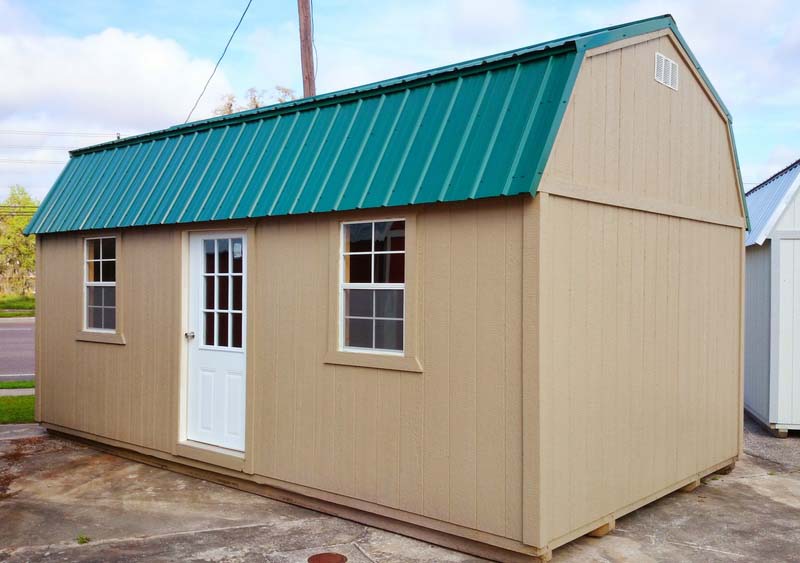Lofted Barn 386-277-2851
Barn idioms
- “He couldn’t hit the broad side of a barn” is a popular expression for a person having poor aim when throwing an object or when shooting at something.
- To “lock the barn door after the horse has bolted” implies that one has solved a problem too late to prevent it.
- “Were you born/raised in a barn?” is an accusation used differently in various parts of the English-speaking world, but most commonly as a reprimand when someone exhibits poor manners by either using ill-mannered language (particularly if related to manure), or leaving doors open.
- “Your barn door is open” is used as a euphemism to remind someone to zip the fly of their trousers.
- To “barnstorm” is to travel quickly around a large area making frequent public appearances.
Types
Barns have been classified by their function, structure, location, or other features. Sometimes the same building falls into multiple categories.
- Apple barn or fruit barn – for the storage of fruit crops
- Bank barn – A multilevel building built into a banking so the upper floor is accessible to a wagon, sometimes accessed by a bridge or ramp.
- Bridge barn or covered bridge barn – general terms for barns accessed by a bridge rather than a ramp.
- Boô – A sheep-barn and dwelling in the Netherlands, seasonal or sometimes year round.
- Pennsylvania barn (U.S.) of which there are sub-categories such as standard and sweitzer types. Also known as forebay or porch barns.
- Cantilever barn – a type of log crib barn with cantilevered upper floor(s) which developed in Appalachia (U.S.A.)
- Combination barn — found throughout England, especially in areas of pastoral farming and the standard barn type in America. This general term means the barns were used for both crop storage and as a byre to house animals.
- Crib barn – Horizontal log structures with up to four cribs (assemblies of crossing timbers) found primarily in the southern U.S.A.
- Drying barns for drying crops in Finland and Sweden are called riihi and ria, respectively.
- New World Dutch Barn – An ancient barn type in the U.S. Also see Dutch barn (U.K.) in Other farm buildings section below.
- English barn (U.S.), also called a Yankee or Connecticut barn – An ancient and widespread barn type in the U.S.
- Granary — to store grain after it is threshed, some barns contain a room called a granary, some barns like a rice barn blur the line between a barn and granary.
- Housebarn, also called a byre-dwelling – A combined living space and barn, relatively common in old Europe but rare in North America. Also, longhouses were housebarns.
- Pole barn — a simple structure that consists of poles embedded in the ground to support a roof, with or without exterior walls. The pole barn lacks a conventional foundation, thus greatly reducing construction costs. Traditionally used to house livestock, hay or equipment.
- Potato barn or potato house– A semi-subterranean or two story building for storage of potatoes or sweet potatoes.
- Prairie barn – A general term for barns in the Western U.S.
- Rice barn and the related winnowing barn
- Round barn, built in a round shape the term often is generalized to the include polygonal barn and octagonal barn
- Swing beam barn – A rare barn type in part of the U.S. designed for threshing with animals walking around a pole held by a swing beam inside the barn.
- Tobacco barn – for drying of tobacco leaves
- Tithe barn — a type of barn used in much of northern Europe in the Middle Ages for storing the tithes — a tenth of the farm’s produce which had to be given to the church
- Threshing barn — built with a threshing floor for the processing and storage of cereals, to keep them in dry conditions. Characterised by large double doors in the centre of one side, a smaller one on the other, and storage for cereal harvest or unprocessed on either side. In England the grain was beaten from the crop by flails and then separated from the husks by winnowing between these doors. The design of these typically remained unchanged between the 12th and 19th centuries. The large doors allow for a horse wagon to be driven through; the smaller ones allow for the sorting of sheep and other stock in the spring and summer.



